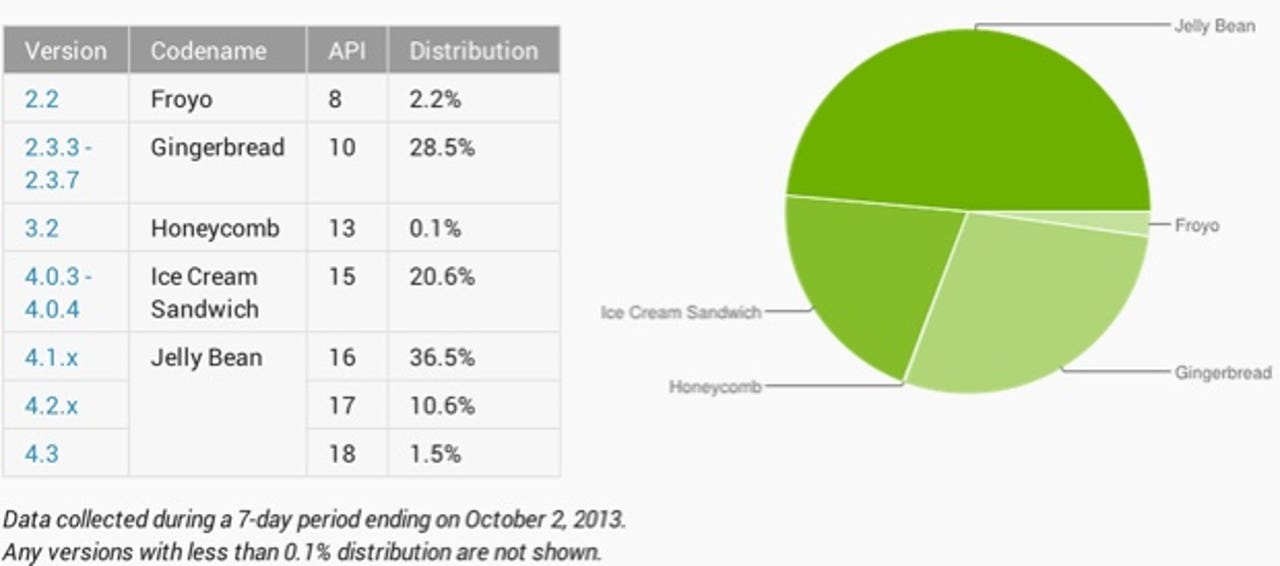Jelly Bean powering close to half of all Android devices, but fragmentation still exists

According to stats released by Google, Jelly Bean is powering almost half of all Android devices accessing the Google Play store.
The data, which is based on smartphones and tablets accessing the Google Play store during a 7-day period ending on October 2, 2013, shows that versions 4.1.x, 4.2.x and 4.3 of Jelly Bean power 48.6 percent of all Android devices.

Over the past three months, Jelly Bean's usage share has increased by over 10 percentage points.
Featured
As far as versions older than Android 2.2, according to Google as of August 2013 they accounted for about one percent of devices that checked in to Google servers (not those that actually visited Google Play Store). This means that they are now very thin on the ground.
This might be good news for developers as it means they can focus their efforts onto the new operating system releases. However, Jelly Bean's nearest rival is Android 2.3.x Gingerbread, a version first released back in February 2011, and this version continues to power 28.5 percent of the devices accessing the Google Play store.
Another fragmentation issue to bear in mind here is that Google has decided to release three different versions of Jelly Bean, and the lion's share of usage is from 4.1.x (also known as API level 16), a version first released July 2012. This means that there's considerable fragmentation among devices running Jelly Bean, with the majority unable to benefit from features introduced in versions 4.2.x and 4.3.
The problem with getting users up to the latest version is not interest. The speed and ferocity with which iOS users upgrade to the latest version shows that users clearly are interested in new versions of operating systems. The problem is that Google is the beginning of a long system that updates have to go through.
After Google releases a new version of Android, device OEMs have to then customize the release and add their own tweaks. Then, for smartphones and tablets that are hooked to a carrier contract, the carriers have to add their own branding. The problem is made worse by the fact that neither the OEMs of the carriers feel there's much of a benefit in pushing free software updates to customers, and would rather focus on selling a new device.
The data also clearly shows how Jelly Bean alone is now the only version of Android that is experiencing growth, which is good news for developers because it means the ecosystem is getting less fragmented as the months progress. However, even if the current trends hold true for the near future, devices running Ice Cream Sandwich and Gingerbread are going to be around for quite some time.
Beginning in April 2013, Google started delivering data collected from each device when the user visited the Google Play Store. Previously, the data was collected when the device simply checked in to Google servers. Google believes that the new data "more accurately reflects those users who are most engaged in the Android and Google Play ecosystem."